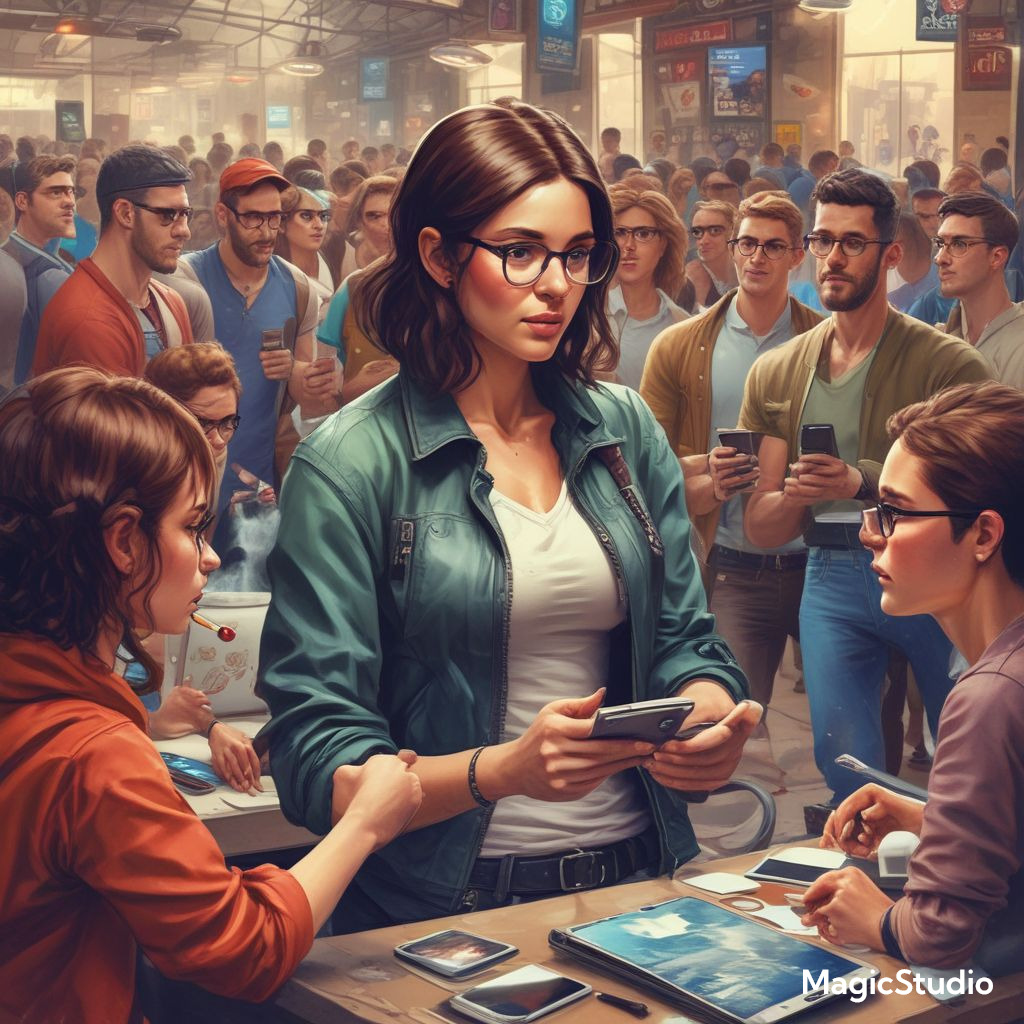The Rise of Social Media Influencers: How Technology is Shaping the New Era of Marketing

Social media influencers have become a central figure in digital marketing strategies, and with the rapid development of technology, their influence is set to grow even more in the coming years. From micro-influencers to celebrity endorsers, these individuals are reshaping how brands engage with consumers. But what role does technology play in their rise, and how can businesses leverage this to succeed in 2025?
1. Influencers in 2025: More Than Just Sponsored Posts
Gone are the days when influencers were simply paid to post promotional content. In 2025, technology will enable influencers to create more authentic, interactive, and immersive experiences for their audiences.
What to expect:
- Collaborative Content Creation: With the help of AI-powered tools, influencers will be able to collaborate on content creation in new and innovative ways. Brands and influencers can now co-create experiences such as live streaming events, interactive Q&As, and even virtual product testing.
- Increased Transparency: As audiences demand more authenticity, influencers will use technology to ensure transparency. This includes real-time tracking of product reviews, engagement analytics, and even honest discussions about sponsorships and product placements.
Why it matters: As consumers become savvier, they are looking for genuine, trustworthy influencers. Brands must embrace the changing influencer landscape to maintain authenticity and consumer trust.
2. The Role of AI in Influencer Marketing
Artificial intelligence (AI) is playing a pivotal role in transforming how influencer marketing works. From identifying the right influencers to optimizing content performance, AI is helping brands reach their target audiences more efficiently.
What to expect:
- AI-Driven Influencer Selection: AI tools can analyze influencers’ audience demographics, engagement rates, and content style to match them with brands seeking specific audiences. This makes influencer marketing more targeted and effective.
- Content Performance Optimization: AI will help influencers and brands optimize content performance by analyzing data and suggesting the best times to post, ideal hashtags, and more.
Why it matters: AI will allow brands to connect with the right influencers, maximize campaign ROI, and improve content strategy, all while providing influencers with insights to grow their own brands.
3. Virtual Influencers: The Future of Social Media Marketing
Virtual influencers—digital characters created through computer-generated imagery (CGI) and artificial intelligence—have already started to make waves in social media marketing, and their role is expected to grow significantly by 2025.
What to expect:
- Fully Customized Virtual Influencers: Brands will be able to create fully customized, AI-driven virtual influencers that can represent their products, connect with audiences, and promote brand values. These virtual influencers won’t be bound by physical limitations, allowing them to create more versatile and engaging content.
- Increased Interaction and Immersion: Virtual influencers will engage with audiences through interactive experiences, such as AR filters, virtual events, and personalized brand activations.
Why it matters: Virtual influencers present a unique opportunity for brands to experiment with innovative marketing campaigns while reducing the risk of human error or controversy. They can create futuristic, captivating content that resonates with tech-savvy audiences.
4. Influencer Marketing Platforms: How Technology Is Simplifying Campaigns
Technology has given rise to influencer marketing platforms, which serve as a bridge between brands and influencers. These platforms use data, AI, and automation to streamline campaign management, ensuring that both brands and influencers get the most out of their partnerships.
What to expect:
- Automated Campaign Management: AI-powered platforms will handle influencer outreach, campaign tracking, and performance metrics, allowing brands to launch, monitor, and optimize campaigns more efficiently.
- Better Metrics and Analytics: Influencer marketing platforms are evolving to provide deeper insights, such as measuring return on investment (ROI), audience sentiment analysis, and engagement tracking in real time.
Why it matters: Influencer marketing platforms make it easier for brands to manage multiple influencers simultaneously, track performance, and ensure that campaigns are running smoothly without the need for manual intervention.
5. Live Streaming and Real-Time Interactions
The ability to stream live events is becoming increasingly popular on social media, with platforms like Instagram, TikTok, and YouTube Live at the forefront. These real-time interactions are becoming an integral part of how influencers connect with their audience.
What to expect:
- Live Product Launches and Demos: Influencers will host live product launches or unboxings, where audiences can watch in real-time and engage with the brand. This creates a sense of exclusivity and immediacy, which is great for driving engagement and sales.
- Real-Time Audience Interaction: AI will help influencers manage and respond to their audiences more effectively during live events. Expect real-time content moderation, automated responses, and personalized interactions to make these live events more engaging.
Why it matters: Live streaming offers real-time engagement, which builds stronger relationships between influencers and their audience. For brands, it’s a way to create authentic connections and boost conversions through interactive experiences.
6. The Impact of 5G on Influencer Marketing
The roll-out of 5G technology will have a significant impact on social media and influencer marketing. With faster internet speeds, more immersive and high-quality content can be created and consumed.
What to expect:
- Faster Content Sharing: Influencers will be able to upload and share high-quality videos, live streams, and AR/VR experiences faster and without lag, improving the overall content experience.
- Immersive Technologies: With 5G, the use of augmented reality (AR), virtual reality (VR), and mixed reality (MR) will become more mainstream in influencer campaigns. Expect virtual try-ons, immersive experiences, and more interactive ways to engage with content.
Why it matters: Faster internet speeds mean that influencers can create more immersive and engaging content, which will enhance brand campaigns and allow for greater creativity.
Conclusion: The Future of Influencer Marketing
The world of influencer marketing is rapidly changing, and technology is at the core of this transformation. From AI-powered tools and virtual influencers to live streaming and 5G, brands will need to adapt to new technologies to stay competitive. Influencers will continue to play a critical role in shaping how businesses connect with consumers, and the next few years promise even more opportunities for innovation.
For businesses, the key will be embracing these technologies while maintaining authenticity and transparency. As the lines between reality and virtual experiences blur, the potential for influencer marketing is boundless.



